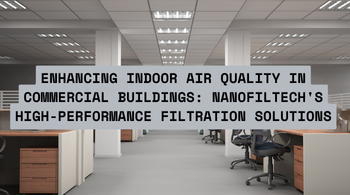Operating Room Environmental Control: How to Effectively Prevent Dust and Bacteria
- Importance of Operating Rooms and Clean Environment Requirements Operating rooms are among the most strictly controlled environments in hospitals. The primary goal is to minimize postoperative infection risk by controlling airborne dust, microorganisms (such as bacteria and viruses), and suspended particles. According to international standard ISO 14644-1, operating rooms typically must meet ISO Class 5 cleanliness (100-class cleanroom), where the number of particles ≥ 0.5 µm must not exceed 3,520 per cubic meter.
- Ventilation Systems: The Core of Cleanliness Maintaining a sterile operating room relies heavily on high-efficiency laminar airflow systems with the following features:
- Continuous Air Exchange: At least 25 air changes per hour to ensure rapid air renewal.
- Directional Airflow: Vertical or horizontal laminar flow directs clean air from the ceiling downward or in one direction to avoid turbulence.
- Multi-Stage Filtration: Air contaminants are removed via a three-stage filtration system (pre-filter, medium, and high-efficiency).
iii. Core Filter Components and Functions of the Ventilation System
|
Filter Type |
Material & Structure |
Filtration Efficiency |
Target Contaminants |
Typical Products & Applications |
|
Primary Filter |
Polyester fiber or metal mesh |
≥5 µm particles, efficiency ≥80% |
Hair, coarse dust, fibers |
Panel Filter (e.g., Nanofiltech P Series): High-density mesh, corrosion-resistant, easy to replace |
|
Medium Filter |
Fiberglass or synthetic cotton |
1-5 µm particles, efficiency ≥95% |
Pollen, mold spores, fine dust |
Box Filter (e.g., Nanofiltech B Series): Multi-fold design, high dust holding capacity |
|
High-Efficiency |
Micro-glass fiber + nano coating |
≥0.3 µm particles, ≥99.97% |
Bacteria, viruses, smoke particles |
Pocket Filter (e.g., Nanofiltech H Series): Large surface area, electrostatic enhancement |
|
Ultra-High-Efficiency |
ULPA (Ultra-Low Penetration Air) |
≥0.1 µm particles, ≥99.9995% |
Nanoparticles, some viruses |
Compact Filter (e.g., Nanofiltech U Series): Modular design, suitable for tight spaces |
*Panel Filter: Serves as pre-filter to block coarse particles and protect downstream filters. *Box Filter: Designed for medium filtration, with box construction for higher pressure tolerance. *Pocket Filter: Bag-style increases surface area and reduces pressure drop; suitable for long-term use. *Compact Filter: Small but powerful, ideal for end-stage filtration in space-constrained settings.
iv. Pressure Control: Preventing Contamination from Outside Positive pressure design prevents external air infiltration:

- Pressure Gradient: Operating room pressure is maintained at +15 Pa above adjacent hallways to allow clean air to flow outward.
- Airlock Rooms: Personnel pass through pressure-regulated airlocks to avoid pressure imbalance when doors open.
- Automated Doors: Sensor-operated rapid-closing doors open ≤5 seconds to minimize air exchange.
v. Personnel Entry Protocol & Contamination Control
Changing and Disinfection:
- Wear sterile gown, mask, cap, and shoe covers.
- Use alcohol-based hand sanitizers to kill 99.9% of common bacteria.
Air Shower Cleaning:
- Pass through an air shower with high-speed airflow (≥20 m/s) to remove surface particles.
- Minimum 15 seconds of airflow removes over 90% of surface dust.
Unidirectional Flow:
- Strictly limit movement in and out to prevent cross-contamination.
vi. Data Support & Industry Standards Cleanliness Validation:
- Periodic particle counting with particle counters to ensure compliance with ISO Class 5 standards.
Filter Replacement Schedule:
- Panel Filter: Replace every 3 months.
- Box Filter: Replace every 6-12 months.
- HEPA Pocket Filter: Replace every 2-3 years (or upon pressure alarm).
- ULPA Compact Filter: Replace every 3-5 years.
Microbial Monitoring:
- Weekly sedimentation plate tests (30-minute exposure, ≤0.2 CFU/plate).
vii. Dual Guarantee: Technology & Management Operating room contamination control is a result of advanced engineeringand strict administrativeprotocols:

- Technical Backbone: Laminar flow systems + multi-stage filtration (e.g., Nanofiltech HEPA/ULPA filters) + positive pressure control.
- Operational Backbone: Personnel protocols + regular equipment maintenance (e.g., filter replacement) + real-time environmental monitoring.
With these systems in place, modern operating rooms can reduce infection rates to under 0.3% (compared to 5%-10% in general wards), ensuring optimal patient safety.
#Nanofiltech #AirFiltration #HEPAFilter #CleanroomTech #SurgicalSafety #HospitalDesign #InfectionControl #MedicalFiltration #CleanAirMatters #OperatingRoomStandards
 UPDATE
UPDATE
2025-06-24
Recent findings from a University College London (UCL) study have shed light on the long-term health effects of early exposure to air pollution. Drawing from data on over 9,000 children in the UK Millennium Cohort Study, researchers discovered that childr Read More2025-06-20
As global demand for data processing and cloud storage surges, data centers have become the backbone of the digital economy. However, maintaining stable operations requires more than just computing power — it depends on clean, reliable airflow. Read More2025-06-18
As urbanization accelerates, building envelopes become tighter, and environmental pollution intensifies, indoor air quality (IAQ) has garnered unprecedented attention. For offices, public institutions, and manufacturing facilities, improving air filtratio Read More2025-06-16
The world's water supply is becoming increasingly scarce, necessitating the development of innovative, cost-effective water filtration technologies. Electrospun nanofiber membranes are among the most promising alternatives due to their exceptional p Read MoreImmediately have your exclusive program customization





